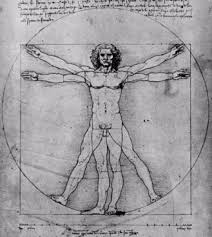Lessons Learned from Mike Robertson - Part II

In the last post I introduced a discussion about body awareness. And what I meant by this was understanding which muscles were firing, when they are firing and how they are firing. The reason this is so important is that many of us having compensations or deficiencies of some type.
Think about it. The aches and pains that we get from time to time are partly due to the strain we put our body under when it is out of alignment. And when we live with these aches and pains for long enough we can sometimes become a little bit desensitized to the feedback our body is trying to give us.

For example if you've had a chronic low back problem you may not think about it all the time. But if someone asks you how it is and you stop and think about it for a second you'll realize it simply hasn't corrected itself but instead you learned to block it out somewhat in order to get through the day. And you aren't consciously thinking about it until someone asks you about it or it gets worse.
So let's jump ahead and assume that someone was able to point out where it is that you're out of alignment and how to correct this alignment issue. Perhaps it's a lack of frontal plane (think side to side) glute activity and by firing this muscle helps to restore your alignment and take stress off your joints that were 'picking up the slack'. As well, you were also made aware of how you will alter your body position to cheat when your glutes get tired and you don't want them to work anymore.
This would all be very useful info to you. So how do you make sure to ingrain this process and ensure that you can repeat it at will? I believe there are 3 aspects to mastering this.

1. First you need to understand and feel what it is like to fire the appropriate muscles. While there is benefit to using a mirror to notice your posture and appearance there may also be some benefit to closing your eyes and paying attention to what you feel. Where do you feel the contraction? Is it deep or superficial? Is it localized to a specific area or general and covering a larger area? Does it fatigue quickly or feel like it could last for a while?

2. In addition to the muscles that are being activated think about other areas of the body. Particularly think about the opposite side of the body and determine if there is a stretch. Where do you notice this stretch? How is this stretch influenced by increasing the force and or duration of the contraction?

3. Lastly you need to be very aware of when this activation or stretch changes. Do you feel your body position change? Do you feel new muscles helping take on some of the load? Do you notice any type of strain develop over time? At the point when you notice these things happening it is important to pause, come out of the position you were attempting to maintain, rest and then resume from a new position once again.
In the next post I'll give you an example of a drill you can try to test this out.
Chris okanaganpeakperformance.com 'always moving forward'
Stay Informed
When you subscribe to the blog, we will send you an e-mail when there are new updates on the site so you wouldn't miss them.
Comments